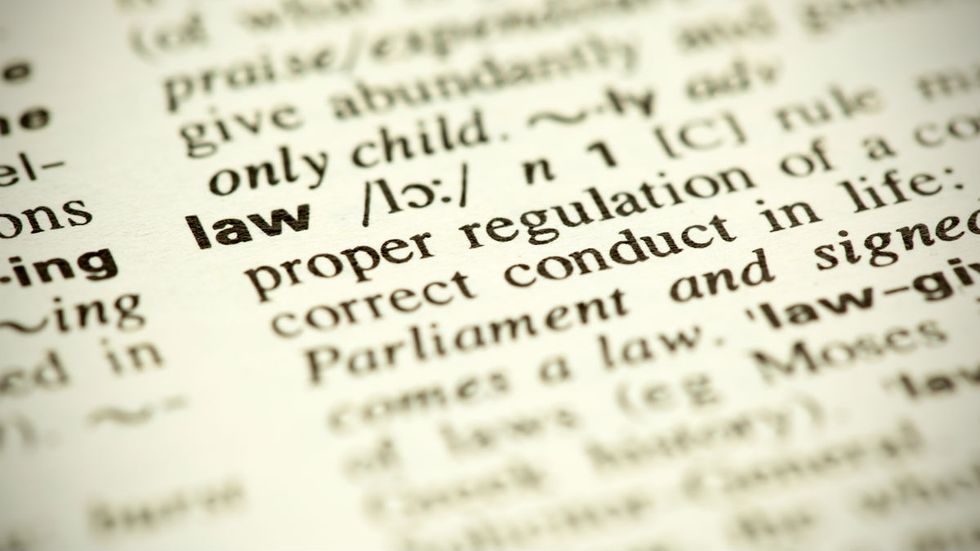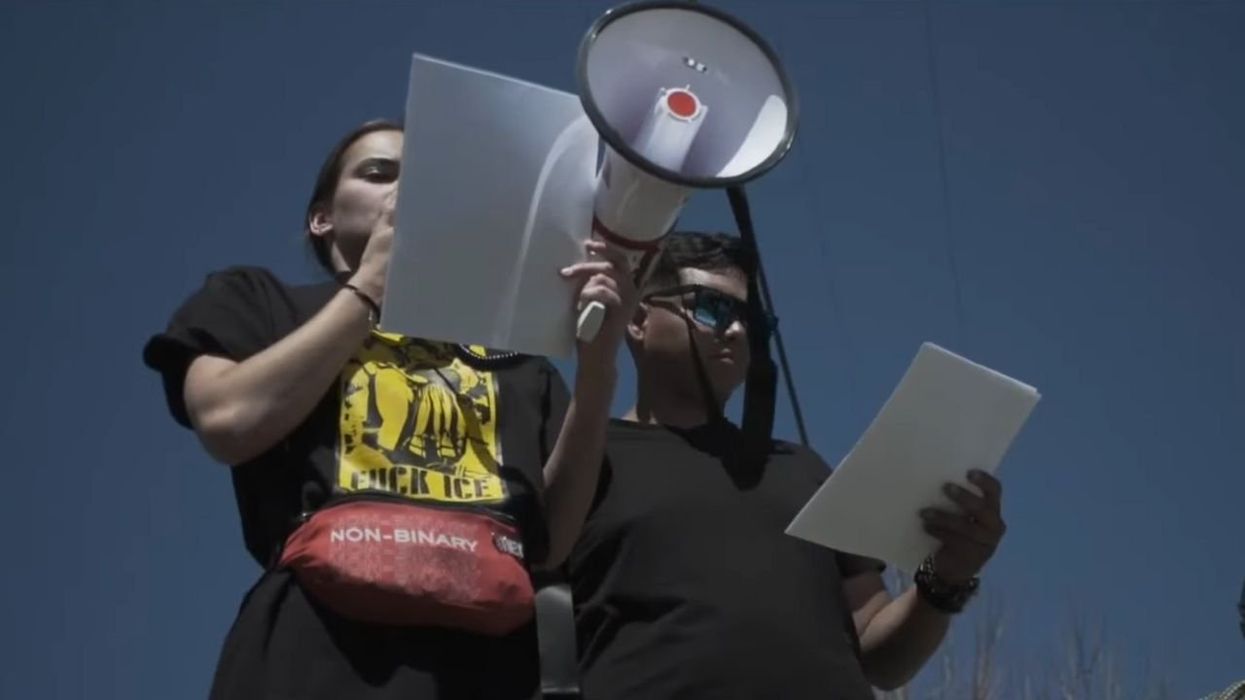
© 2024 Blaze Media LLC. All rights reserved.
Trump admin proposes modest enforcement of 1996 public charge laws Democrats supported
August 12, 2019
If there are 7.8 billion people in the world and we can choose from would-be immigrants, shouldn’t we only choose those who will not be on welfare? That was the goal of the 1996 welfare reform and immigration bills, backed by hundreds of years of ironclad principle, yet in recent years, it has not been enforced. Today, the Trump administration took some modest steps toward finally enforcing it.
Last year, when the administration first pitched the enforcement of a public charge rule, I noted how this rule had been enforced since our colonial times. Our current laws address the public charge concept in three different ways:
- Under Section 212(a)(4) of the Immigration and Nationality Act (INA), an individual seeking admission to the United States or seeking to adjust his status to permanent resident (obtaining a green card) is inadmissible if the individual “at the time of application for admission or adjustment of status, is likely at any time to become a public charge.”
- Section 237(a)(5) states that “any alien who, within five years after the date of entry, has become a public charge from causes not affirmatively shown to have arisen since entry is deportable.”
- Section 213(a) empowers the attorney general to require sponsors to sign an affidavit agreeing “to maintain the sponsored alien at an annual income that is not less than 125 percent of the Federal poverty line.”
Among the factors that are to be assessed when making this determination are “assets, resources, and financial status; and education and skill.”
In addition, section 403 of the Personal Responsibility and Work Opportunity Act of 1996 (PRWOA), the famous welfare reform bill, bars legal immigrants from accessing welfare for five years. Joe Biden, the leading Democrat presidential candidate, voted for that bill.
Yet even though that law recognized that we hadn’t been enforcing our “basic principle of United States immigration law since this country’s earliest immigration statutes” that immigrants should not be a public charge, we still have not been enforcing it over the past two decades. Applications for admission or adjustment of status are almost never turned down on public charge grounds, sponsors are never made to pay the bond for public charge, and nobody is deported for becoming a public charge.
Thanks to the lack of enforcement on the front end of the immigration system, 63 percent of non-citizen households use at least one welfare program, according to the Center for Immigration Studies. Many collect welfare on behalf of their American-born children. For those here more than 10 years (and no longer subject to the five-year bar), the rate is 70 percent. In California alone, “72 percent of non-citizen-headed households use one or more welfare programs, compared to 35 percent for native-headed households,” according to the CIS. “In Texas, the figures are 69 percent vs. 35 percent; in New York they are 53 percent vs. 38 percent; and in Florida, 56 percent of non-citizen-headed households use at least welfare program, compared to 35 percent of native households.”
Today, Trump’s USCIS director announced a new rule slated to go into effect in 60 days that will tighten the formula for deeming someone a public charge for purposes of immigration and green card denials. It expands both the duration of welfare use that will make someone a public charge and the types of programs included.
Specifically, the final rule defines “public charge” as an alien who receives one or more designated public benefits for more than 12 months, in the aggregate, within any 36-month period. Also, whereas under the prevailing regulation, only those who are on Supplemental Security Income (SSI) and Temporary Assistance for Needy Families (TANF) (cash welfare) would be rendered a public charge, now it would include food stamps, Medicaid for those over 21 (except pregnant women), and Section 8 housing assistance.
Applicants under 21 or pregnant women would still be able to obtain Medicaid and not have their green card application rejected. Also, any immigrant household taking welfare on behalf of American-born children will not have that usage held against their application. The rule does not include consideration of emergency medical assistance, disaster relief, national school lunch programs, WIC or CHIP, foster care and adoption, student and mortgage loans, energy assistance, food pantries and homeless shelters, or Head Start.
Also, all those applying for refugee, asylum, parole, U-Visas, or any other humanitarian status are exempt.
In other words, the overwhelming majority of the public strain from immigrants using welfare will continue even under this rule. The important thing is that the Trump administration is at least trying to make current and long-standing law a factor in determining eligibility.
It’s also important to note that the new rule does not enforce deportability of those who become a public charge. Rather, they would just remain in limbo under their non-adjusted status.
On the front end, for those seeing initial entry, the rule put into place more specific regulations to give force to the 1996 immigration law (supported by Pelosi, Schumer, and Biden) to “consider the alien's (I) age; (II) health; (III) family status; (IV) assets, resources, and financial status; and (V) education and skills” when factoring in whether to approve the application.
Finally, let’s not forget that the entirety of illegal immigration is a loophole around our entire system. Nobody is factoring in the cost of their children, education, hospital visits, endless care at the border, etc. Using a formula from Steven Camarota of the CIS, it’s estimated that the lifetime cost of just this year’s flow of illegal immigrants could easily top $150 billion.
In addition, the Trump administration has still not stopped the IRS’ practice of inviting illegal aliens who don’t have Social Security numbers to file taxes and receive the refundable child tax credit. In 2011, the Treasury Inspector General for Tax Collection released a shocking report detailing how illegal aliens are able to use a filing loophole to obtain $4.2 billion every year in Additional Child Tax Credit (ACTC) funds.
The IRS could easily check with the DHS and the Social Security Administration to verify legal status and hold up any tax credits for illegal aliens, yet they concocted a scheme to ensure they get welfare.
Not only does the IRS have the discretion to enforce the law against illegal aliens, it is likely required to do so. Section 401(c)(1) of the Personal Responsibility and Work Opportunity Act of 1996 (PRWOA), the famous welfare reform bill, bars unlawfully present aliens from receiving any “retirement, welfare, health, disability, public or assisted housing, postsecondary education, food assistance, unemployment benefit, or any other similar benefit for which payments or assistance are provided to an individual, household, or family eligibility unit by an agency of the United States or by appropriated funds of the United States.”
Refundable tax credits should definitely count as forms of payments and assistance to individuals, because all government budget scoring entities, including the Treasury Department, the IRS’ parent department, counts refundable tax credits as “outlays,” not just reductions in revenue. The Congressional Budget Office, the arm of Congress, which wrote the welfare reform statute prohibiting programs from being doled out to illegals, counts refundable tax credits among “income security” programs, such as food stamps and housing assistance. Also, the language of the 1996 statute makes clear the intent of the law: “It is a compelling government interest to remove the incentive for illegal immigration provided by the availability of public benefits.”
Thus, while the administration takes a very modest step toward enforcing the principle that immigration should only be a net benefit to Americans, there is still a long way to go. But any amount of protection for American taxpayers will be too much for the liberal media.
#mc_embed_signup{background:#fff; clear:left; font:14px;}
/* Add your own MailChimp form style overrides in your site stylesheet or in this style block.
We recommend moving this block and the preceding CSS link to the HEAD of your HTML file. */
Want to leave a tip?
We answer to you. Help keep our content free of advertisers and big tech censorship by leaving a tip today.
Want to join the conversation?
Already a subscriber?
Blaze Podcast Host
Daniel Horowitz is the host of “Conservative Review with Daniel Horowitz” and a senior editor for Blaze News.
RMConservative
Daniel Horowitz
Blaze Podcast Host
Daniel Horowitz is the host of “Conservative Review with Daniel Horowitz” and a senior editor for Blaze News. He writes on the most decisive battleground issues of our times, including the theft of American sovereignty through illegal immigration, theft of American liberty through tyranny, and theft of American law and order through criminal justice “reform.”
@RMConservative →more stories
Sign up for the Blaze newsletter
By signing up, you agree to our Privacy Policy and Terms of Use, and agree to receive content that may sometimes include advertisements. You may opt out at any time.
© 2024 Blaze Media LLC. All rights reserved.
Get the stories that matter most delivered directly to your inbox.
By signing up, you agree to our Privacy Policy and Terms of Use, and agree to receive content that may sometimes include advertisements. You may opt out at any time.



